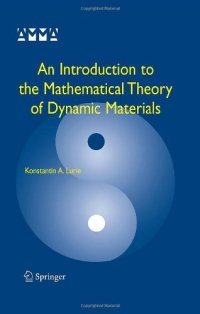
Ebook: An Introduction to the Mathematical Theory of Dynamic Materials
Author: Konstantin A. Lurie (auth.)
- Genre: Mathematics
- Tags: Partial Differential Equations, Structural Materials, Optical and Electronic Materials, Calculus of Variations and Optimal Control, Optimization, Classical Electrodynamics Wave Phenomena, Vibration Dynamical Systems Control
- Series: Advances in Mechanics and Mathematics 15
- Year: 2007
- Publisher: Springer US
- City: New York; London
- Edition: 1
- Language: English
- pdf
This book gives a mathematical treatment of a novel concept in material science that characterizes the properties of dynamic materials—that is, material substances whose properties are variable in space and time. Unlike conventional composites that are often found in nature, dynamic materials are mostly the products of modern technology developed to maintain the most effective control over dynamic processes. These materials have diverse applications: tunable left-handed dielectrics, optical pumping with high-energy pulse compression, and electromagnetic stealth technology, to name a few. Of special significance is the participation of dynamic materials in almost every optimal material design in dynamics.
The book discusses some general features of dynamic materials as thermodynamically open systems; it gives their adequate tensor description in the context of Maxwell’s theory of moving dielectrics and makes a special emphasis on the theoretical analysis of spatio-temporal material composites (such as laminates and checkerboard structures). Some unusual applications are listed along with the discussion of some typical optimization problems in space-time via dynamic materials.
Audience
This book is intended for applied mathematicians interested in optimal problems of material design for systems governed by hyperbolic differential equations. It will also be useful for researchers in the field of smart metamaterials and their applications to optimal material design in dynamics.
This book gives a mathematical treatment of a novel concept in material science that characterizes the properties of dynamic materials—that is, material substances whose properties are variable in space and time. Unlike conventional composites that are often found in nature, dynamic materials are mostly the products of modern technology developed to maintain the most effective control over dynamic processes. These materials have diverse applications: tunable left-handed dielectrics, optical pumping with high-energy pulse compression, and electromagnetic stealth technology, to name a few. Of special significance is the participation of dynamic materials in almost every optimal material design in dynamics.
The book discusses some general features of dynamic materials as thermodynamically open systems; it gives their adequate tensor description in the context of Maxwell’s theory of moving dielectrics and makes a special emphasis on the theoretical analysis of spatio-temporal material composites (such as laminates and checkerboard structures). Some unusual applications are listed along with the discussion of some typical optimization problems in space-time via dynamic materials.